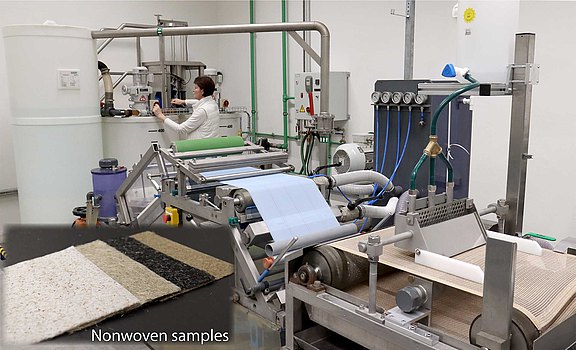For the production of wetlaid nonwovens, a laboratory line with a working width of 300 mm is available at TITK. The wetlaid nonwoven line is designed for the production of two-layer nonwovens and can be combined with a binder application, a belt dryer and a thermal bonding calender. This enables the implementation of different bonding variants (chemical binders or thermal bonding fibres).
The TITK uses this plant for its own research tasks, but also for customer orders.
The system configuration is suitable for:
- Nonwoven formation tests with special fibres such as carbon fibres, aramid fibres, glass fibres, metal fibres, ion exchanger fibres, antimicrobial fibres; preliminary tests on the sheet formation properties of the fibres can be carried out on a Rapid-Köthen sheet former,
- Development of filter nonwovens through the use of high-tech fibres,Optimisation/adaptation of filter nonwovens through the production of multilayer nonwoven constructions,
- Optimisation/adaptation of filter nonwovens through the manufacture of multi-layer nonwoven constructions
- New development of customised nonwovens,
- Characterisation of different fibre qualities with regard to processing properties in the wet nonwoven process,
- Testing of dispersion properties, suitable cut lengths, dewatering behaviour,
- Assessment of the fleece formation properties and deposition on the sieve belt,
- Tests of fleece bonding with binders or thermally by thermobonding,
- Production of small batches.
The wet nonwovens are developed for use as filter material, as semi-finished products for textile laminates and composites or as decorative surface material for interior parts in the living area and in automotive interiors.
